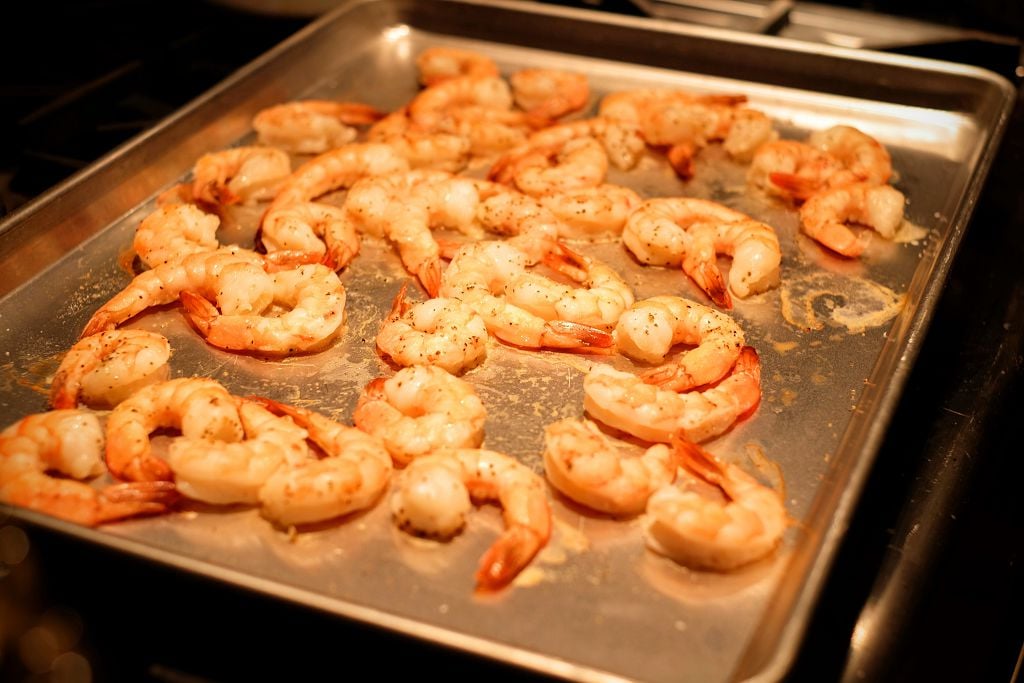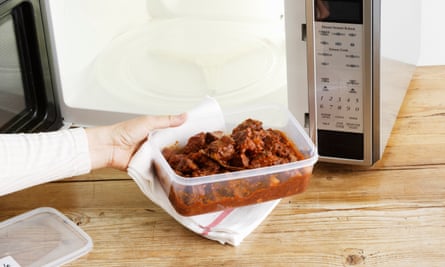Listen up seafood lovers! I’ve been cooking shrimp for years, and lemme tell you – there’s nothing worse than wasting those precious (and often pricey!) shellfish. Today, we’re diving deep into the world of reheating shrimp, cuz I know we’ve all been there – staring at leftover shrimp and wondering if it’s safe to heat it up again.
The Quick Answer
You should only reheat shrimp once after it’s been initially cooked Reheating multiple times increases food safety risks and ruins the texture
Why You Shouldn’t Reheat Shrimp Multiple Times
Here’s the deal – every time you reheat shrimp
- Bacterial growth becomes more likely
- The texture gets more rubbery
- The flavor quality decreases
- Moisture levels drop
- Food safety risks increase
The Right Way to Reheat Shrimp (Do This!)
When reheating shrimp follow these steps for best results
- Check the smell first – If it smells fishy or off, toss it!
- Use gentle heat – High temps will make it tough
- Add moisture – A splash of water or butter helps
- Heat until just warm – Don’t overcook
- Eat immediately – Don’t let it sit around
Best Reheating Methods
| Method | Time | Tips |
|---|---|---|
| Microwave | 1-2 mins | Use 50% power, add moisture |
| Stovetop | 2-3 mins | Low-medium heat, butter helps |
| Oven | 5-7 mins | 275°F, wrap in foil |
Storage Tips to Avoid Multiple Reheats
Ya know what’s better than reheating multiple times? Proper storage! Here’s what I do:
- Separate into portions before storing
- Store in airtight containers
- Refrigerate within 2 hours of cooking
- Use within 3-4 days
- Only reheat what you’ll eat
Signs Your Reheated Shrimp Has Gone Bad
Trust me, you don’t wanna mess with bad seafood! Watch for:
- Slimy texture
- Strong fishy smell
- Color changes
- Off-putting odor
- Mushy consistency
Creative Ways to Use Leftover Shrimp Without Reheating
Instead of reheating again, try these yummy alternatives:
- Cold shrimp cocktail
- Shrimp salad
- Seafood pasta salad
- Add to green salads
- Make shrimp rolls
Food Safety Tips for Shrimp
We gotta talk safety, fam! Here’s the important stuff:
- Never leave cooked shrimp at room temp over 2 hours
- Store between 32-40°F
- Reheat to at least 165°F
- When in doubt, throw it out!
Common Mistakes When Reheating Shrimp
Avoid these rookie errors:
- Reheating multiple times
- Using too high heat
- Forgetting to add moisture
- Not checking temp
- Storing improperly
The Bottom Line
Look, I get it – nobody wants to waste food, especially expensive shrimp! But when it comes to seafood safety, it’s better to be safe than sorry. Stick to reheating just once, store properly, and use leftover shrimp creatively instead of repeatedly reheating.
Pro Tips from My Kitchen to Yours:
- Buy only what you’ll eat
- Portion before storing
- Label containers with dates
- Plan meals around leftovers
- Consider cold preparations
Remember – one reheat is all you get! After that, either eat it cold or find another use for it. Your tummy will thank you later!
Have you got any awesome tips for using leftover shrimp? Drop ’em in the comments below! And don’t forget to share this with your seafood-loving friends – we all need this info!
Stay safe and enjoy your shrimp, fam!
Would you like me to explain or break down any part of this article further?

Why can food make us sick?
There are many ways bacteria and viruses can end up in foods. They may occur naturally in environments where products are harvested or contaminate foods during processing.
Viruses won’t grow in foods and will be destroyed by cooking (or proper reheating). On the other hand, bacteria can grow in food. Not all bacteria make us sick. Some are beneficial,including probiotics in yoghurt or starter cultures used to make fermented foods.
But some bacteria are not desirable in foods. These include those that reproduce and cause physical changes, making food unpalatable (or spoiled), and pathogens, which cause illness.
Some pathogens grow in our gut and cause symptoms of gastroenteritis, while others produce toxins (poisons) which cause us to become sick. Some bacteria produce special structures, called endospores, which survive for a long time – years, even – until they encounter favourable conditions which allow them to grow and produce toxins.

While cooking and reheating will generally kill pathogenic bacteria in foods, they may not destroy toxins or endospores. When it comes to reheating foods, toxins pose the greatest risk of illness.
The risk increases in foods that have been poorly handled or cooled too slowly after initial cooking or reheating, since these conditions may allow toxin-producing bacteria to grow and proliferate.
Bacteria that cause food-borne illness typically grow at temperatures between 5C and 60C (the “temperature danger zone”), with fastest growth occurring about 37C.
Foods that are best able to support the growth of these bacteria are deemed “potentially hazardous” and include dishes containing meat, dairy, seafood, cooked rice or pasta, eggs or other protein-rich ingredients.
A common culprit of food poisoning linked to reheated foods is Staphylococcus aureus, which many people carry in their nose or throat. It produces a heat-stable toxin that causes vomiting and diarrhoea when ingested.
Food handlers can transfer these bacteria from their hands to foods after cooking or reheating. If the contaminated food is kept within the temperature danger zone for an extended period, Staphylococcus aureus will grow and produce toxins. Subsequent reheating will destroy the bacteria but not the toxins.
Sign up to Saved for Later
Catch up on the fun stuff with Guardian Australias culture and lifestyle rundown of pop culture, trends and tipsEnter your email address
Can You Safely Reheat Shrimp? – Your Nutrition Network
FAQ
Can you heat up shrimp twice?
Do Not Reheat Twice. When reheating leftover grilled shrimp, it’s important only to reheat what you plan to consume and avoid reheating the same portion multiple times. Reheating shrimp more than once can increase the risk of bacterial contamination.
Is it safe to reheat seafood twice?
Fresh-cooked seafood is the best. The most stringent recommendation is only to reheat fish once to avoid bacteria growth, which can lead to food illness.Apr 7, 2023
Is it safe to reheat shrimp?
… keep your shrimp succulent by allowing it to reach room temperature first, then reheat it on a low heat using the same cooking method as you used originallyJul 24, 2023
Can I reheat shrimp after 3 days?
Cooked shrimp lasts for 3 to 4 days in the refrigerator. – When reheating leftover shrimp, it’s best to use a low temperature to avoid the rubbery texture shrimp can get when overcooked. Alternatively, enjoy leftover cooked shrimp cold or at room temperature, depending on how it was prepared.Jul 14, 2023
